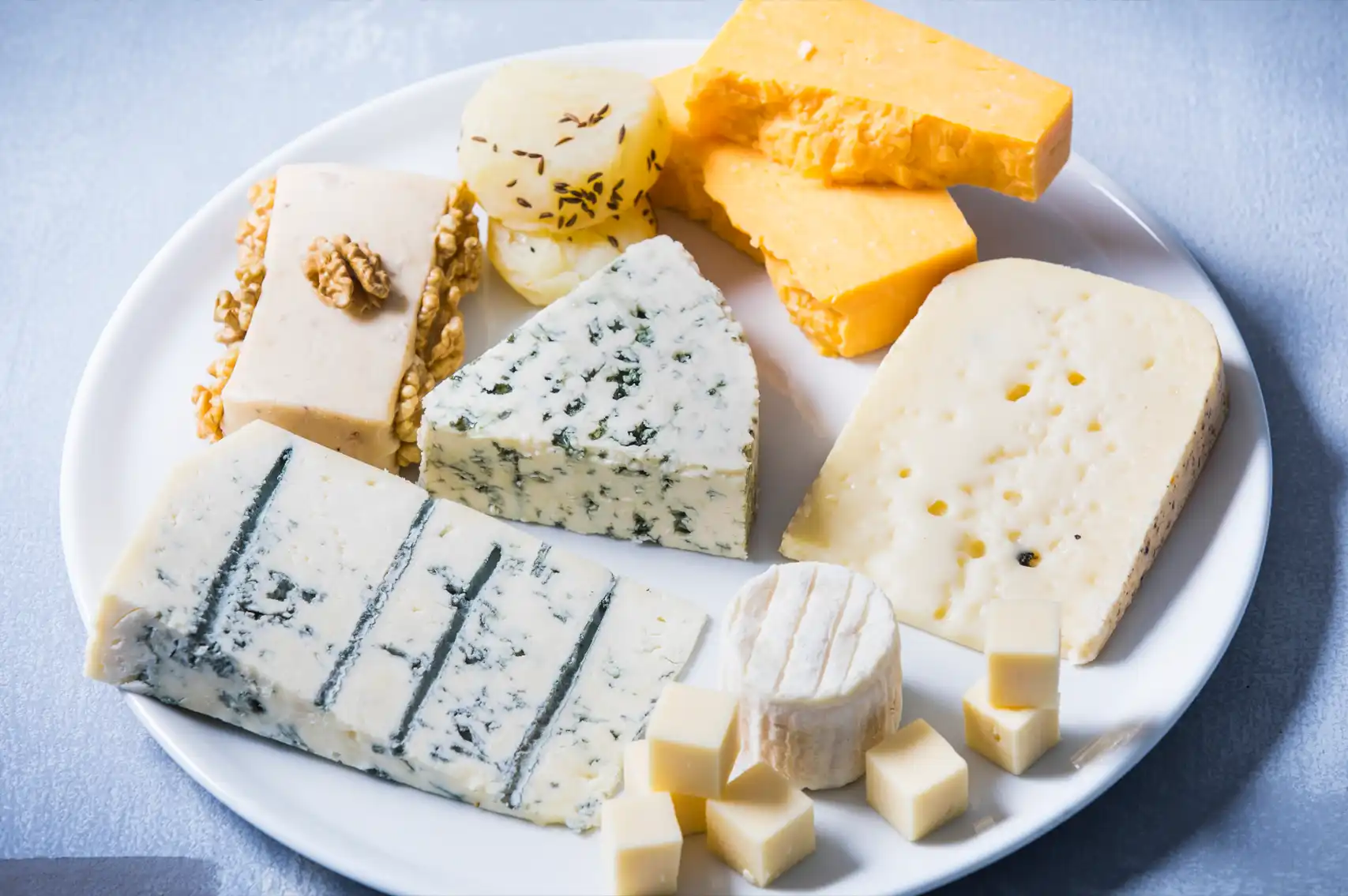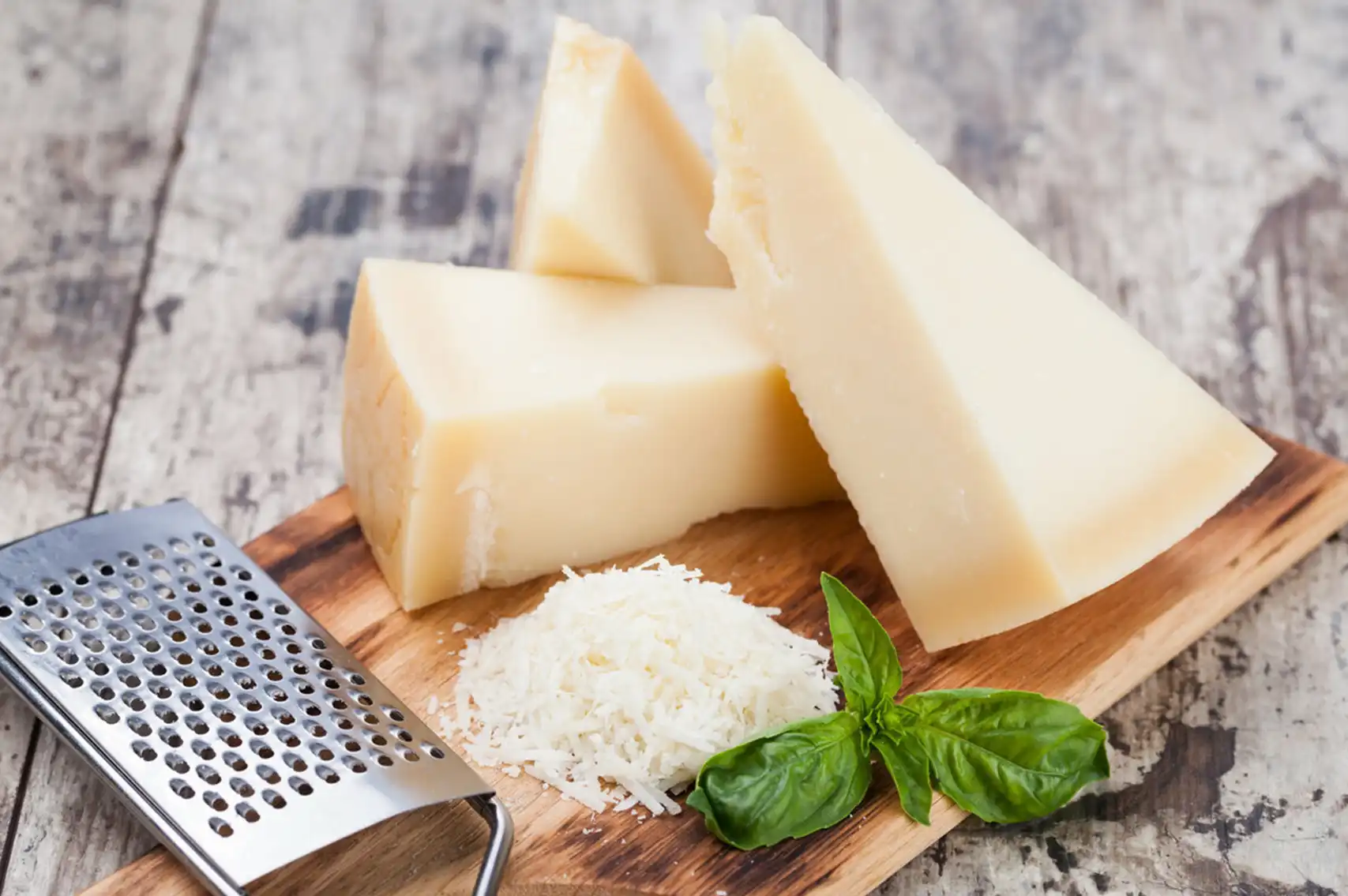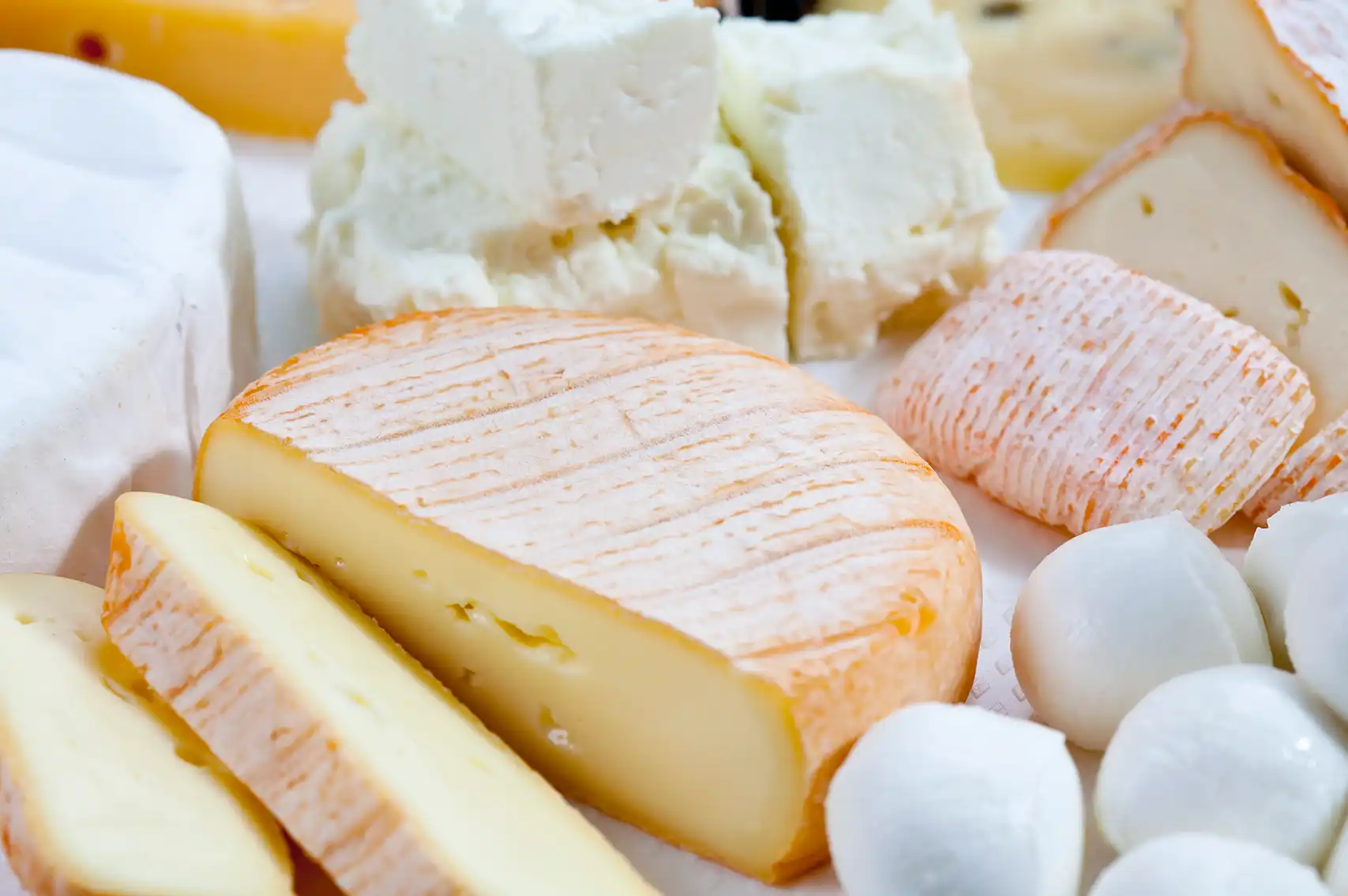Cheese is a beloved food around the world, from the creamy softness of fresh varieties to the nutty, aged hardness of others. But the question arises: what is the healthiest cheese to include in our diet? Given the wide variation in fat, sodium, calcium, protein, and processing between cheese types, some varieties are clearly better choices than others if you’re concerned about health, weight, or heart health. In this Calin’s article, we’ll look at what makes a cheese healthy; review the top low-fat and high-protein cheese options; compare hard vs. soft cheeses; explore the best cheese for heart health; and answer some frequently asked questions. Stay with us to know the best options for you and your health.
Click to buy cheese with the best quality and price in Calin
What Makes a Cheese Healthy?
When judging how “healthy” a cheese is, several nutritional and practical factors come into play:
Key Factors to Consider As Healthy:
- Low saturated-fat content: Many cheeses are high in saturated fat, which, if consumed in excess, can raise LDL (“bad”) cholesterol and increase cardiovascular risk.
- Low to moderate sodium: Some cheeses are often salted, and high-sodium diets contribute to high blood pressure and cardiovascular issues. Choosing varieties with lower sodium is beneficial.
- High-quality protein: Cheese can be a valuable source of protein; for weight management, muscle maintenance, and overall nutrition, higher protein and lower calories/fat are desirable.
- Good micronutrient profile: Useful amounts of calcium, phosphorus, vitamins (such as B12), and maybe probiotics in some soft cheeses can improve the health value.
- Moderate calorie density: Especially for weight loss or maintenance, cheeses that provide good nutrition without excessive calories per serving are preferable.
- Minimal processing or additives: Some highly processed cheese products may have extra salts, emulsifiers, and artificial ingredients; simpler, traditional cheeses tend to be better.
- Portion & context: Even a relatively “healthy” cheese must be consumed in sensible portions, and the rest of the diet matters.
So, the healthiest cheeses will be those that manage to deliver good protein and micronutrients while keeping saturated fat, sodium, and calories at moderate levels. With that framework, let’s explore some top choices.
Click to Buy natural cheese with the highest quality and wide variety

Best Cheese for Heart Health: Top Low-Fat and High-Protein Cheese Options
Here is a selection of cheeses that consistently register well in nutrition analyses as “healthier” choices.
1. Cottage Cheese
One of the best cheeses for weight loss. A half-cup of low-fat cottage cheese delivers a high protein content, low calories, and low fat. For example: per ½-cup serving of 2% cottage cheese: about 12 g of protein, ~90 calories, ~2 g fat. But these amounts can vary based on brands and even countries.
Additionally, in a small 2015 study in 30 adults, researchers found that cottage cheese was just as filling as an omelet with similar nutritional composition. So if you are looking for the healthiest cheese to eat and the healthiest cheese for the heart, cottage cheese is a prime candidate.
2. Part-skim Mozzarella
A great all-rounder. Mozzarella made from part-skim milk is relatively lower in calories, saturated fat, and sodium compared to many aged cheeses. For example: 1 oz (≈28 g) of full-fat mozzarella: around 85 calories, 6 g protein, 6 g fat. Again, you might see a mozzarella nutrition table different from these amounts; no need to worry. Also, mozzarella is noted to contain some probiotic bacteria (in fresh varieties) that may benefit gut/immune health. Thus, mozzarella is a strong contender when you want a tasty cheese with a better nutrition profile.
3. Ricotta
Ricotta made from part-skim milk can deliver moderate protein, relatively lower fat, and good calcium. For example: per 100 g: about 7.5 g protein, 10.2 g fat, ~150 calories (as per one source) for regular ricotta. Because of its mild taste, you can incorporate it into both sweet and savory dishes. Ricotta cheese, with its creamy texture, is considered a higher-calorie cheese. While it does contain calories, it can still be part of a healthy diet if you monitor your portion size and overall calorie intake.
4. Swiss Cheese (Emmental / Low-moisture varieties)
For those who are watching their sodium intake or are selective about strong flavors, Swiss cheese is often a popular choice among natural cheeses. Its mild, nutty taste makes it versatile in a variety of dishes, from sandwiches and salads to omelets and casseroles. Because of its gentle flavor, even a smaller amount can add a satisfying richness to your meals without overwhelming the palate. Swiss cheese also melts well, creating creamy textures in cooked dishes, which makes it a practical option for those looking to balance taste and health considerations. Its approachable flavor and lower sodium profile make it an excellent choice for anyone seeking a more subtle, yet still flavorful, cheese experience.
5. Parmesan (aged)
Although not considered a low-fat cheese, Parmesan and other aged hard cheeses are incredibly flavorful, meaning a little goes a long way. Just a small sprinkle can transform a dish, adding depth, richness, and a savory punch without overwhelming other flavors. Using Parmesan in modest amounts, as a garnish on pasta, salads, roasted vegetables, or soups, allows you to enjoy its bold taste while keeping overall calorie and fat intake in check. Its concentrated flavor makes it an efficient way to elevate meals, giving you maximum impact with minimal quantity.

Hard Cheeses vs Soft Cheeses: Which is Healthier?
The texture category (hard vs soft) does give some general tendencies, but it isn’t the sole guide.
Click to view dairy products and other products at Calin Dairy
Hard Cheeses
These cheeses include aged varieties such as Parmesan, aged cheddar, Gouda, and Gruyère. They are generally denser than younger cheeses, which makes them richer in flavor and more nutrient-dense. Their bold taste means you can enjoy smaller portions while still getting a satisfying, flavorful experience. Aged cheeses also tend to have less moisture, which contributes to their concentrated texture and richness. While they may have a higher natural sodium content, their intensity of flavor allows you to use them sparingly, making them a good option for adding depth to dishes without overdoing it.
Soft Cheeses
These cheeses include fresh varieties such as cottage cheese, ricotta, fresh mozzarella, and goat cheese. They generally have higher moisture content, which makes them lighter and lower in fat and calories per serving compared with many aged or hard cheeses. Their soft, creamy texture makes them highly useful in both sweet and savory dishes, from salads and sandwiches to desserts and spreads. Because of their lighter profile, you can often enjoy larger portions without adding excessive calories, making them a practical choice for meals where volume and satisfaction matter.
If you are looking simply for the “healthier” category, soft or fresh cheeses of the low-fat kind often come out ahead for weight management or lower saturated fat burden. However, hard cheeses have their place when used sparingly. The key identifier is nutrient density vs calorie/fat load, and also sodium content. Choose whichever you enjoy and will realistically incorporate, but favor lower-fat, lower-sodium options and watch portion sizes.

Frequently Asked Questions (FAQ)
What is the healthiest cheese for weight loss?
Cheeses that are lower in fat and calories and higher in protein are generally best for weight management. Fresh, high-moisture cheeses like cottage cheese, ricotta, and part-skim mozzarella are popular choices. Their high protein content helps keep you full, and their lighter texture allows you to enjoy a satisfying portion without consuming too many calories.
Is cottage cheese healthier than mozzarella?
It depends on the type of mozzarella and your dietary goals. Cottage cheese is usually lower in fat and calories and higher in protein per serving than full-fat mozzarella, making it a better option for weight management. Fresh, part-skim mozzarella is also a reasonable choice, offering mild flavor and moderate protein content.
Can eating cheese every day be healthy?
Yes, when eaten in moderation and as part of a balanced diet, cheese can be part of a healthy daily routine. Choosing lower-fat or lower-sodium varieties, or enjoying smaller portions of more flavorful cheeses, helps you get the benefits of protein, calcium, and other nutrients without excess calories or sodium. Portion control and variety are key.


